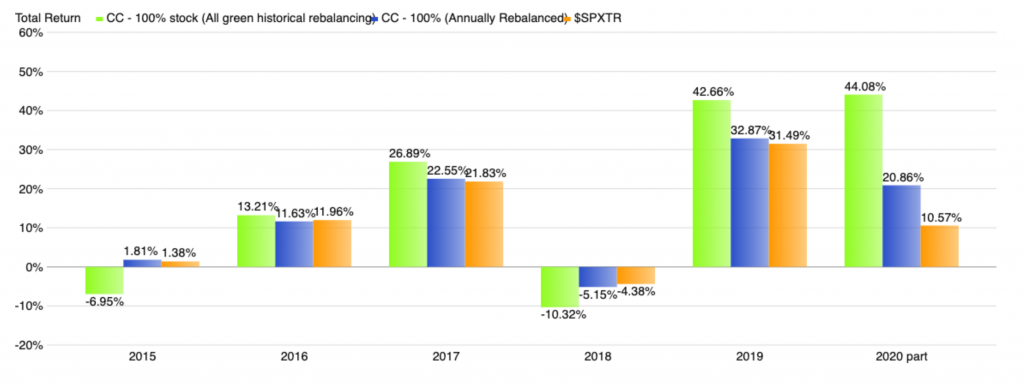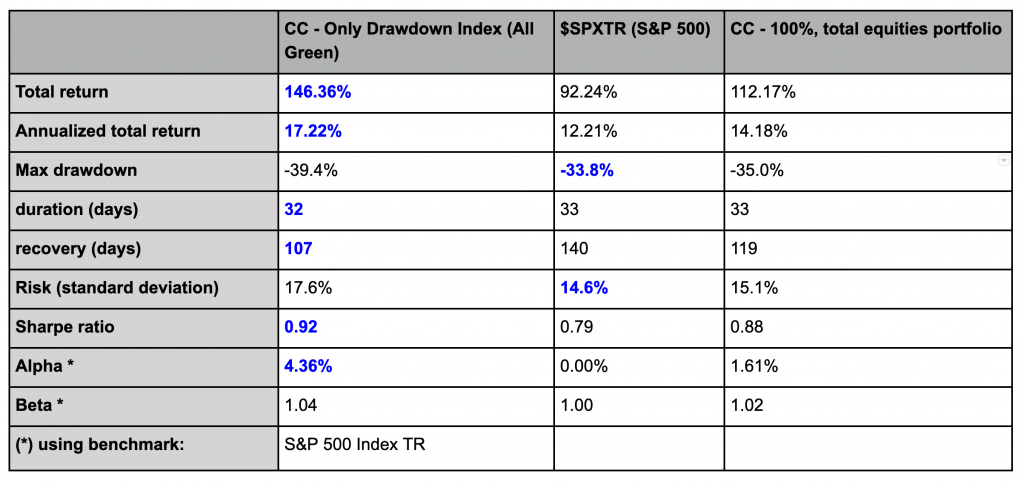What is Drawdown?
Project Drawdown is the leading resource on solutions to climate change. They have cataloged the top 100 climate solutions and lay out the: estimated cost to implement them, the potential financial savings, and the potential CO2e (carbon dioxide equivalent) avoided or sequestered.
What’s exciting about Project Drawdown is that these solutions aren’t science fiction. They are pretty much all technologies and practices that exist today and only require further scaling up.
From how we transport ourselves, to how we generate electricity, to how we grow and store our food — our global systems can become carbon neutral and even carbon negative if our civilizations invest in making it so.
Why does it need an index?
While government policy is key towards advancing the climate solutions laid out in Project Drawdown, many of them are already being implemented and scaled up by private companies. From solar, to wind, to electric cars, to landfill methane capture, there are thousands of companies across the globe who are in the business of solving climate change.
While many of them are private companies, quite a few are publicly traded, meaning you can invest in them on public markets like the New York stock exchange. The problem we found was that outside of buying shares in them all individually, the only way to invest in these companies and support their mission has historically been to buy mutual funds or ETFs for a category of them, like solar or clean energy.
We like investing index funds because they often track all of the companies in given category of companies, without trying to pick winners and losers. This way you’re investing in the category itself. They generally have lower fees too. Until we built one, there was not an index of climate change companies. The closest you could get were solar and clean energy funds, but these only represent a fraction of the total companies solving climate change.
So we built and launched the Drawdown Index in 2020 with 112 companies solving climate change. Here’s the framework we use to decide which companies get included.
How we build the Drawdown index
Historically, there are many frameworks that analysts use to assess companies on ethical grounds. Many of them result in a single score (ESG) or a letter grade (CDP). For some, this makes sense. The world is complex and there are truly hundreds of ethical lenses one can use to evaluate a massive company. Combining all of the answers into one score helps account for this complexity.
We’re ethically-driven investors who like to “look under the hood” of investment funds. And for us, we find these frameworks to be too opaque. We believe that in trying to capture and distill this ethical complexity, they often dilute the impact of key issues that we really care about, like climate change.
A simple ethical filter for inclusion
We took a simpler approach. In order for a company to be in the Drawdown Index, it needed to answer the following questions correctly:
Question #1
Does the company make products or provide services that advance at least one of the climate solutions from Project Drawdown?
– If yes, then go to question #2.
– If no, then exclude.
Question #2
Does the company make products or provide services for the fossil fuel industry?
– If no, then include.
– If yes: Would this company need to change its core business to adapt to a world without fossil fuels? Our test: Do they make more revenue from their drawdown solution or their sales to the fossil fuel industry?
– If yes, then exclude.
– If not, then include.
Question – Why would companies that make any products or provide any services for the fossil fuel industry be included in the index?
Answer – The world unfortunately still runs on fossil fuels. The process of Drawdown necessitates a transition away from fossil fuels. This transition will not happen overnight. We want to support the companies who are leading that transition while acknowledging that some of their customers may still be fossil fuel companies. Some examples:
- Included: Broadwind Energy is a fabrication and welding company that makes big steel structures. In 2003, they made a decision to bet on wind and today make about 70% of their revenue from constructing wind turbines. But fabrication and welding can apply to many industries and some of its revenue comes from building pipes that are used in the fossil fuel industry.
- Included: Xylem owns multiple water-related companies, one of which, YSI, makes water quality sensors. These sensors can be used across many industries, including fossil fuels. If the fossil fuel industry disappeared this would not disrupt YSI’s core sensor business.
- Excluded: General Electric (GE) is one of the largest wind turbine manufacturers in the world. Unfortunately, they generate more revenue from building natural gas turbines and airplane jet engines. As such a large part of their business is still reliant upon a world run by fossil fuels, we excluded them (for now) from the Drawdown index.
Additional filter: Utilities
There are dozens of investor-owned utilities traded on the New York stock exchange (such as Duke, Nextera, Dominion, Xcel, PG&E, etc.). While practically all of them have some form of carbon reduction/neutrality commitment, there is a broad range of historical investment in renewable energy and follow through on these commitments.
In order to be included in the Drawdown Index an investor-owned utility must:
- Generate (or purchase) more than 50% of its energy from carbon neutral sources (wind, solar, hydro, and nuclear).
- Have closure dates for any coal plant they own in the next three years.
- Assuming they are not yet carbon neutral (or very close to it), they must be investing in renewable energy at a rate that exceeds state or federal mandates. The California-based utilities, PG&E and Con Edison fail on this criteria and are good counter-examples. Basically, we want to invest in the utilities leading the parade towards carbon neutrality, not those merely being forced to.
- Have a clear track record of carbon reductions to make their claims of future reductions more believable.
Given these criteria it’s unsurprising that only four US-based utilities (Nextera, Exelon, and Ormat, and Avangrid) make the cut. We are excited for more utilities to hopefully be included in future iterations of the index as they progress towards carbon neutrality.
Additional filter: Waste management companies
There are three Drawdown solutions related to waste management: recycling, composting, and landfill methane capture. All of the publicly traded waste management companies collect materials for recycling. Municipalities, not waste management companies decide to collect compost. Therefore, we opted to use the landfill methane capture as the deciding factor.
In order to be included in the Drawdown index a waste management company must capture methane at over 50% of the landfills it operates. Three out of the four publicly traded waste management companies meet this threshold.
Some notable companies that didn't make it
If you look through the Drawdown list of climate solutions, you will find some solutions that don’t have in them. The publicly traded companies doing the work in these spaces have not passed criteria for inclusion. We hope this changes overtime. These solutions are exciting and we personally are excited to invest in them. Here’s some examples:
- Bioplastics. Dupont and Braskem both have bioplastic divisions, but they are still quite small. The bulk of both companies’ revenue comes from petrochemicals.
- Alternative Refrigerants. Chemours and Honeywell are both working on alternatives to freon and other highly polluting refrigerants, but the majority of their refrigerants revenue still comes from the old, polluting variety.
- Hybrid Cars. All traditional car companies still make a majority of their revenue from selling non-hybrid, fossil fuel-burning cars. We could not find a traditional car company that met criteria for inclusion. The closest was Toyota who sold 15 million hybrid vehicles between 1997 and 2020. This is impressive, but Toyota sold 10.6 million vehicles in 2019 alone.
- Bicycle Infrastructure. Uber and Lyft both own urban bike sharing companies and “last mile” electric scooter companies that help people in cities quickly go short distances without using cars. The problem is Uber and Lyft’s core business do the opposite from a climate-perspective. In 2020, the Union of Concerned Scientists published a report claiming that the two companies ride-sharing systems generate 69% more pollution than the transportation they replace.
We don't exclude companies for financial reasons
We did consider including a financial filter, but ultimately decided not to. Some of the companies in the index are very small, making them questionable investments for any sizable part of a portfolio. We have found that our portfolios avoid this problem. We base the amount invested in a Drawdown company based upon the size/value (market capitalization) of the company on the New York stock exchange.
So, the collection of micro cap companies in the Drawdown Index represented a proportionally micro portion of the overall portfolio allocation. They posed little actual liquidity risk. The only financial criterion for inclusion in the Drawdown Index is the stock must be traded on one of the New York Stock Exchange. Aside from that, the filter is purely ethical.
How we update the Index
Did we miss companies in constructing the index? Most likely. This is V1. Every year we will conduct an annual review of the index, ensuring the companies we have included still meet criteria for inclusion and adding any new companies that have met the requirements for inclusion.
If you think we missed a company or we made a mistake including a company, please let us know at drawdownindex@carboncollective.co so we can take your thoughts into consideration for next year’s update (we update annually because doing so more often could have negative tax consequences).
Historical returns & financial stats
“Green” investing has had a historical stereotype of underperforming the rest of the market. So how did an investment strategy built around the Drawdown Index do?
We ran two simulations to look back and see what would have happened if you had invested in the Drawdown Index from 01/01/15 – September 1st, 2020 with annual updates at the end of each year. (Learn more about how we run simulations of historical performance our climate friendly stock portfolios)
Here you can see the results plotted against the S&P 500. The “CC – 100% stock (All green historical rebalancing)” represents a portfolio built only of companies in the Drawdown index. The CC – 100% (Annual rebalancing) represents the Carbon Collective equity portfolio of which the Drawdown Index makes up about 20%. They are both compared to the returns from the S&P 500 during the same time period (the orange line).



Please remember that past performance is no guarantee of future results.
What can we learn from this simulation? A few things that stand out:
The Drawdown index seemed to move in the same direction as the overall market, but with more volatility. This higher volatility is not surprising given the smaller number of holdings and lower diversity in the 100% Drawdown Index portfolio.
From an investment perspective, the stats show some positive indicators for the Drawdown Index (at least from during this time period). The time to recovery from its greatest loss is shorter than either of the two benchmarks and it significantly outperformed the expected return given the portfolio’s amount of risk (as evidenced by its high alpha).
Will this pattern continue? Who knows. Nobody can predict the future. What we can more confidently claim is that, at least over this time period, the stereotype of green investing underperforming the market did not prove to be true for this portfolio.
Conclusion
So that is how we compiled the first ever, exhaustive list of public companies solving climate change.
We began constructing the index because there was no comprehensive list of the publicly traded companies building climate change solutions. We sought to make the broad logic for inclusion and exclusion simple, clear, and algorithmic. For the companies where it would still be difficult to analyze whether they were “enough” focused on climate solutions, we included further criteria to define what is in and out.
We finished this year’s iteration knowing there were a number of Drawdown categories companies were working on, but still had not met criteria for inclusion in the full index. We’ll be updating it every year adding new companies that go public and old companies that shift their focus to solving climate change. We’ll also make sure to remove any companies that move backwards and no longer meet criteria.
If you’re like us, and you want your investments supporting and betting on the companies solving climate change, rather than making it worse, check out our climate-friendly investment platform.



